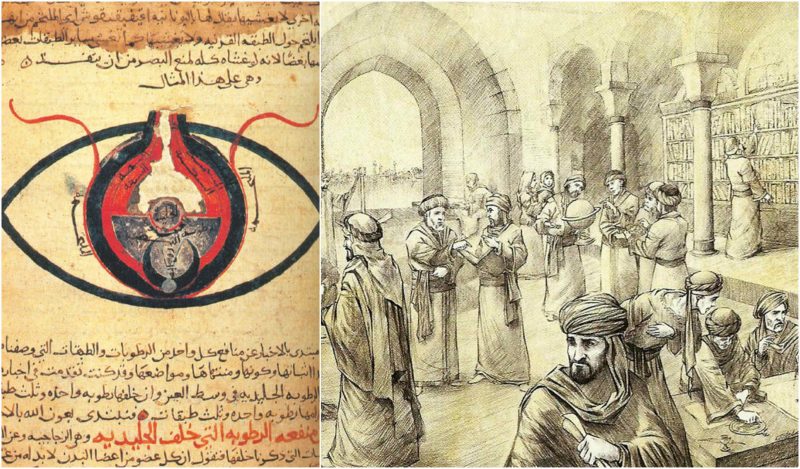Back in the 9th century AD, the House of Wisdom was established in Baghdad.
It contained manuscripts on mathematics, astronomy, science, medicine, and philosophy from Persia, India, and Greece. There were also astronomical observatories, laboratories for chemistry and alchemy, and a center for studying science.
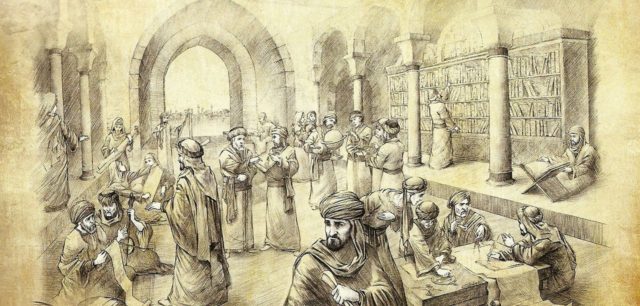
The House of Wisdom was created during the Islamic Golden Age by Caliph Harun al-Rashid and it blossomed at the time when his son Al-Ma’mun reigned. Harun al-Rashid started collecting books in Damascus – when it was the capital of the Islamic Empire, during the Abbasid era. With this collection, al-Rashid opened a library and named it “Bayt al-Hikma” meaning “Storehouse of the Books of Wisdom” in Arabic.
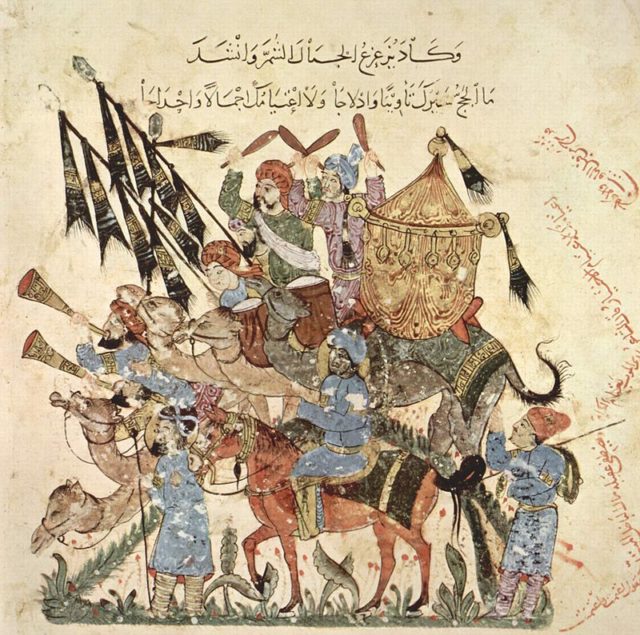
Desirous for science, philosophy, and knowledge of the world, al-Rashid and later also his son Al-Ma’mun were employing Persian and Christian scholars to translate works in Arabic in order to develop new knowledge.
The library contained works on medicine, alchemy, physics, mathematics, astrology, geography, cartography, zoology, philosophy and other disciplines.
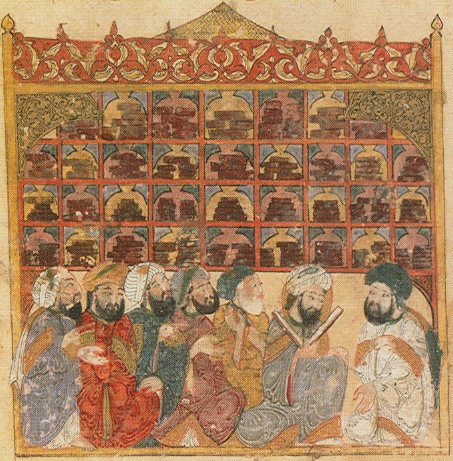
The Umayyad dynasty was replaced by the Abbasid dynasty in 750, and the caliph al-Mansur built Baghdad in 762, making it the capital of the Islamic Empire. Baghdad was a great location for a stable commercial and intellectual center. When Al-Amin succeeded his father al-Rashid, he kept the tradition of translating texts from foreign languages into Arabic. It turned into a Translation movement, and a lot of works were translated from Greek, Chinese, Sanskrit, Persian, and Syriac.
The whole collection of books was transferred to Baghdad where the same library was established, only this time in a huge palace. Everyone had access to it and everyone could be schooled there. The library and its work were supported by everyone, including merchants and the military.
Everyone could bring novelty or a new paper. The main activity was the translation of texts into Arabic, but those were also used for studying. Many engineers and architects in major construction projects came from the Bayt al-Hikma – or the House of Wisdom. It was the academic center of the Islamic world.
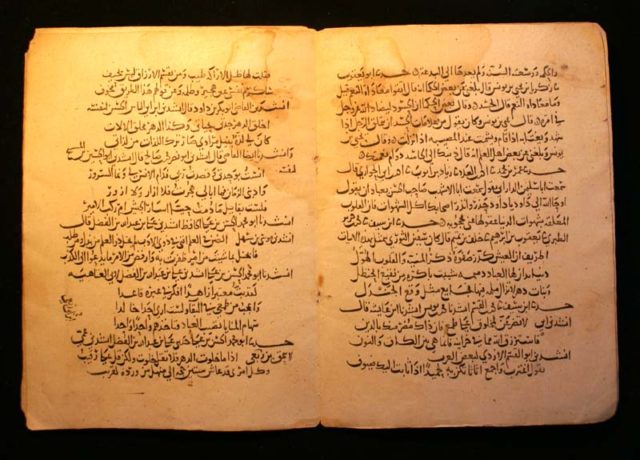
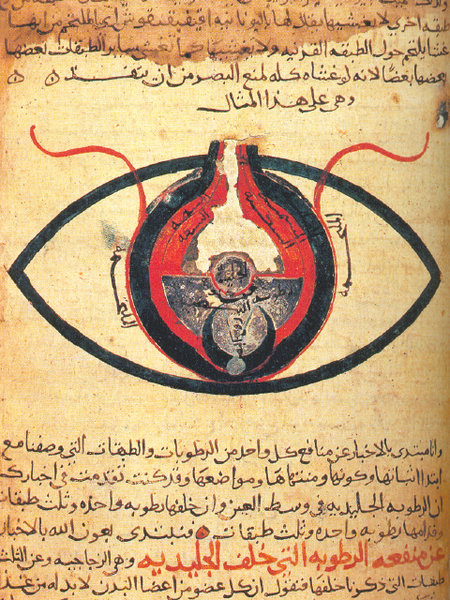

During the reign of Al-Ma’mun, he not only invested large sums of the budget in the library and teaching, but he was keen on it enough to visit the Bayt al-Hikma every day and to be involved in the everyday life there. Also, he was personally organizing groups of scholars to do research projects in order to satisfy his personal intellectual needs.
Some of his personally created projects included the mapping of the world, the confirmation of data from the Almagest and the deduction of the real size of the Earth. He also participated in excavations of the pyramids of Giza and encouraged scholars to study Egyptology.
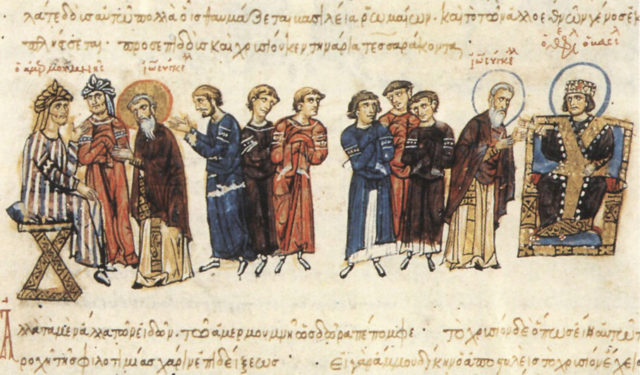
The work at the House of Wisdom remained in the same rhythm during the reign of al-Ma’mun’s successors al-Mu’tasim and his son al-Wathiq, but considerably declined when al-Mutawakkil became the caliph. He was not interested in science and suspended all the scientific work done in the House of Wisdom. He promoted a more literal interpretation of the Qur’an and Hadith, and he thought that Greek philosophy was anti-Islamic.
The character of the library had changed completely. Instead of scientists and philosophers, only disciplines related to Islam were taught and translated. In 1258, during the two-week Mongol siege of Baghdad, the House of Wisdom was destroyed by the army of Hulagu, along with all other libraries in the city.
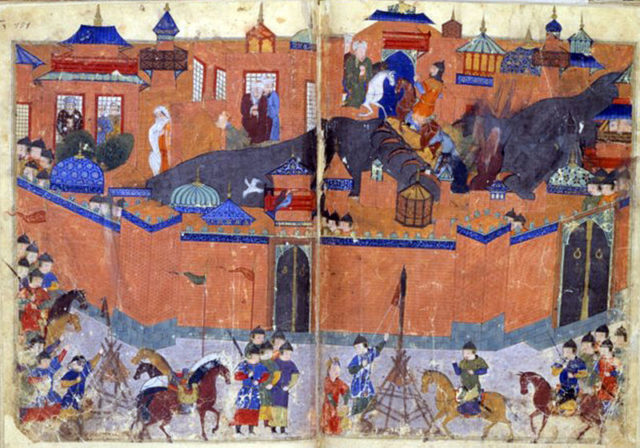
Even though Nasir al-Din al-Tusi managed to save about 400,000 manuscripts which he took to Maragheh before the siege, the rest of the books were thrown into the Tigris River. It is not known how many books were destroyed, but it is written that the river turned black from the ink.
